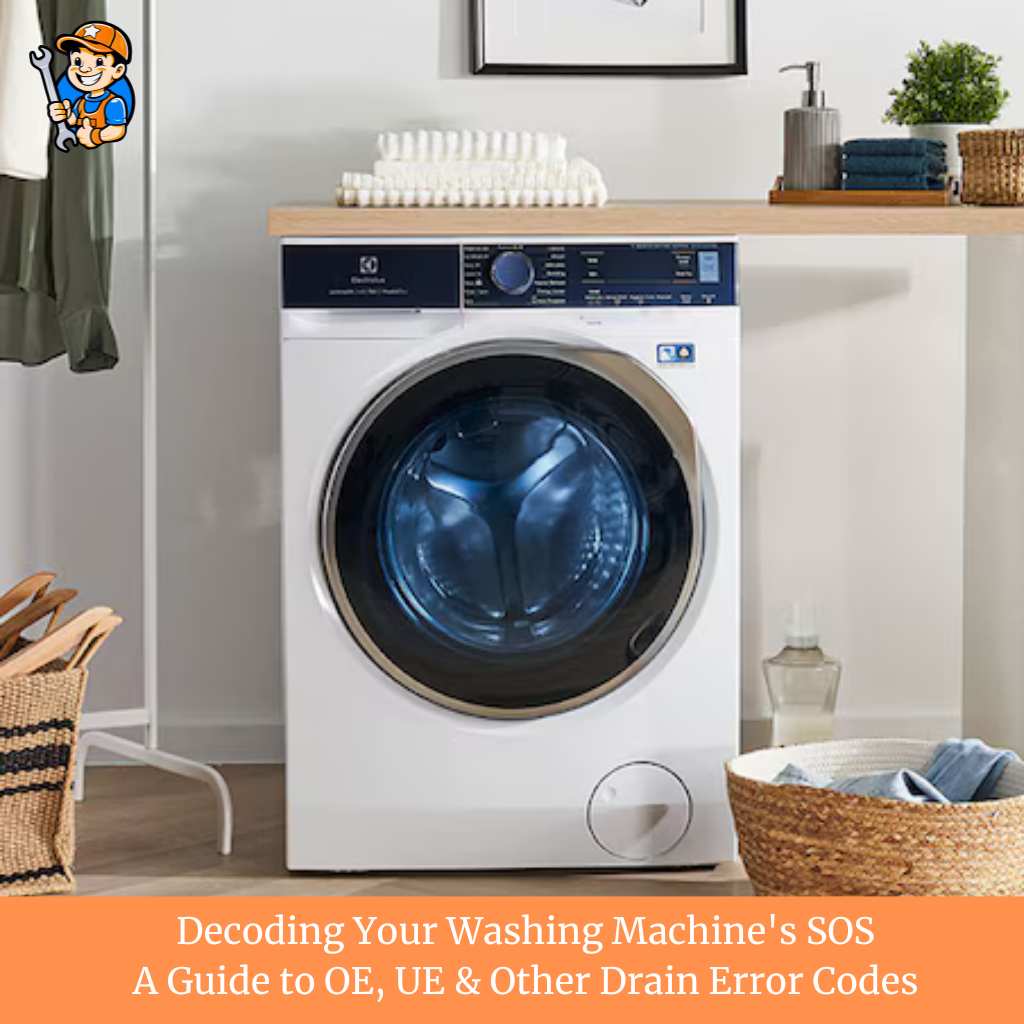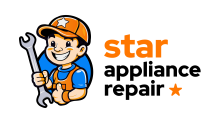Decoding Your Washing Machine’s SOS: A Guide to OE, UE & Other Drain Error Codes

Washing Machine Not Draining? Here’s What to Do
A washing machine that won’t drain is one of the most frustrating appliance problems you can face. You’re left with a tub full of soggy, dirty clothes, and a floor that’s a prime target for a water spill. While seeing an error code like OE, UE, SD, or A-10 on the display can be worrying, these codes are actually a useful clue. They’re your washing machine’s way of telling you exactly what’s wrong.
At Star Appliance Repair, we understand the stress of a broken washer. We offer reliable, in-home washing machine repair Toronto and throughout the Greater Toronto Area (GTA) to get your laundry routine back on track. Before you call for help, let’s break down why your washer might not be draining and what those common error codes mean.
Why Isn’t My Washing Machine Draining?
Most draining issues can be traced back to a few common culprits. The good news is, some of these you can check yourself. The most frequent causes of a washer not draining are:
- Clogged Drain Hose: This is often the simplest fix. The drain hose, which removes water from the washer, can get bent, kinked, or clogged with lint, soap residue, or small articles of clothing.
- Clogged Pump Filter: Many modern washing machines have a small filter at the bottom, usually behind a small panel. This filter is designed to catch debris like coins, buttons, and lint before they can damage the pump. If it’s blocked, water can’t get out.
- Faulty Drain Pump: The drain pump is the part that actively pushes water out of the machine. If the pump is old, damaged, or has a foreign object stuck in it, it won’t be able to do its job.
- Lid or Door Switch Problems: On some top-load and front-load washers, the machine won’t begin a new cycle or drain if the lid or door isn’t properly latched. A broken switch can make the machine think the door is open, preventing it from draining.
- Overloading the Washer: Filling your washing machine too full can confuse the machine’s sensors. This can sometimes cause it to stop mid-cycle and prevent it from draining properly.
Decoding Common Washing Machine Error Codes
When your washer displays an error code, it’s not just a random string of letters and numbers. It’s giving you a specific diagnosis. Here’s what some of the most common codes mean:
- OE (LG): This code almost always indicates a drainage error. It means the washer has tried to drain the water but failed. The cause is usually a clogged or kinked drain hose, a blocked pump filter, or a faulty drain pump.
- UE (Samsung, LG, Whirlpool): While this code can sometimes mean a drain issue, it more commonly points to an unbalanced load. The washer detects that the clothes are all bunched up on one side, which can prevent it from spinning and draining correctly. Simply rearranging the clothes and redistributing the weight can often solve this.
- SD or SUDS (Whirlpool, Maytag, Kenmore): This code means the washer has detected too many sudsin the drum. Excess soap can prevent the water from draining properly. The machine will often pause the cycle and add water to dilute the soap. To prevent this, make sure you’re using the right amount of detergent, especially if you have a high-efficiency (HE) washer.
- F9 E1 (Whirlpool): This is another common code indicating a long drain time. It’s essentially telling you the washer is taking too long to drain, which can be due to a clog in the drain hose or a problem with the pump.
- A-10 (GE): This is a GE-specific code that also signals a drainage problem. Like the other codes, it points to a clogged pump or hose, or a malfunctioning pump.
Can You Fix a Washing Machine That Won’t Drain Yourself?
Before you call a professional for washer repair Toronto, you can try a few simple troubleshooting steps.
- Safety First: Unplug the washer from the wall to avoid any electrical hazards.
- Check the Drain Hose: Look behind the machine. Is the hose kinked, bent, or squashed against the wall? Straighten it out and make sure it has a clear path.
- Inspect the Pump Filter: Locate the small access panel on the front of your washer, usually at the bottom. Place a towel or bucket underneath, as some water will likely spill out. Open the panel, unscrew the filter cap, and check for any debris. Clean out any lint, coins, or other items you find.
- Balance the Load: If your error code points to an unbalanced load (like UE), open the lid or door and manually redistribute the clothes. Try to spread them evenly around the drum.
If these simple steps don’t fix the problem, it’s time to call in the experts. A clogged or faulty pump can be a tricky and messy fix for someone without the right tools and experience.
When your washer is on the fritz, you need a reliable, fast, and experienced team to help. Star Appliance Repair is the go-to choice for appliance repair in Toronto and surrounding areas like Mississauga, North York, and Toronto.
Don’t let a mountain of wet laundry ruin your day. If you’re dealing with a washing machine that’s not draining or showing a stubborn error code, contact the professionals at Star Appliance Repair. We’ll quickly diagnose the issue and provide an effective, long-lasting solution.
Ready to get your washer fixed?
Book a service online or call us at (647)-847-8774 for expert washer repair Toronto and the GTA.
appliance repair toronto, how to, maintenance, washer repair Toronto

